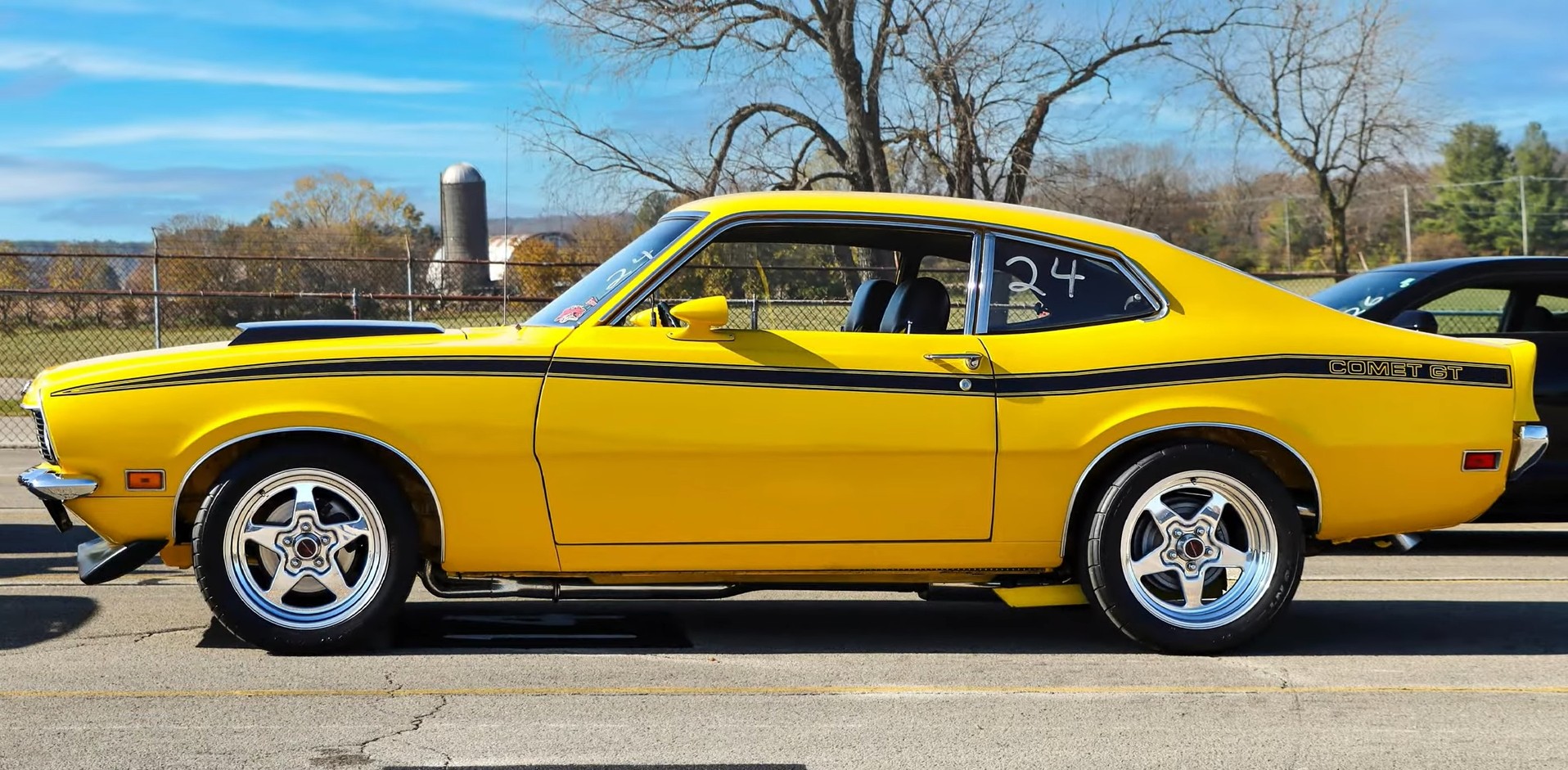Introduced in 1959 as a competitor for the Rambler American, the Ford Falcon was the first compact marketed by the “Big Three” manufacturers. A year later, the Falcon spawned a second compact in the FoMoCo lineup, the Comet.

Originally planned as an Edsel model, the Comet ended up with the Lincoln-Mercury division after Ford put an end to the unsuccessful brand in late 1959. Initially sold without any divisional badging, the Comet officially became a Mercury in 1962.
While not as iconic as the Falcon, the Comet remained in dealerships until 1977. It was also sold in two different sizes. A compact from 1960 to 1965, the Comet grew larger and became a midsize from 1966 to 1969. Briefly discontinued in 1970, the Comet returned as a compact in 1971.

Not surprisingly, the midsized Comet spawned the most desirable iterations, starting with a limited-edition, drag-spec 1964 Comet Cyclone. Built in 1964 in just 50 units, it was powered by a 427-cubic-inch (7.0-liter) V8 similar to that offered in the more iconic Ford Thunderbolt.
In 1966 and 1967, the Comet also got a GT/GTA package similar to the Fairlane, which came with a 390-cubic-inch (6.4-liter) V8 good for 335 horsepower. Finally, the Cyclone version of the late 1960s was fitted with the mighty 428-cubic-inch Cobra Jet from the first-generation Mustang.
Of course, the nameplate’s revival as a compact in 1971 was anything but spectacular. With the Malaise Era around the corner, Mercury dropped the big engines from the lineup, leaving only the 302-cubic-inch (4.9-liter) to handle V8 duty. While still satisfyingly potent at 210 horsepower in 1971, the 302 was heavily detuned to 138 horses starting in 1972.

As a result, the final-generation Mercury Comet is far from desirable among classic car collectors. And many of them have been abandoned in junkyards, getting scrapped or being left to rot away. Like this 1973 Comet GT, which was neglected for a whopping 36 years until it became a rust bucket.
But fortunately enough, 1970s Comets aren’t just about sad stories. The yellow example you see here is one of the very few Comets that made it into the 21st century in one piece and still sporting their factory parts. Yes, the car is not entirely original as seen in the video below, but it can be brought back to 1973 specs in no time.

Specifically, we’re looking at a Comet GT that got a few upgrades to become a more potent muscle car and part-time dragster. It still looks factory-stock on the outside save for the Billet Specialties wheels wrapped in drag radial tires, but it no longer relies on its GT-spec 302 V8 engine.
Power now comes from a 365-cubic-inch V8 built around a Dart block. No, I’m not talking about a mill sourced from a Dodge Dart, but a small-block Ford crafted by Dart Machinery, a Michigan-based provider of high-performance aftermarket parts.
Fitted with a modern EFI, the engine is notably more powerful than the Comet’s stock 302 and enables the black-striped yellow coupe to run the quarter-mile in less than 13 seconds.

Yeah, it may not sound like a lot compared to modern muscle cars, but this Comet GT is a whopping five seconds quicker than a stock 1973 Mercury. The swap was made when the car had only 82,000 miles on the odometer, so it’s safe to assume that all the original drivetrain components still exist and are ready to go back into the car when needed.
Granted, it’s not the most desirable Mercury classic out there, but it’s nice to see that not all 1970s Comets are spending their retirement years in backyards and barns. Hit the play button below to see this cool sleeper drag-racing a Cadillac CTS and a fourth-generation Ford Mustang.





